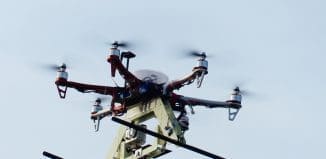Flexible Chip With Outstanding Memory Developed
This post is also available in:  עברית (Hebrew)
עברית (Hebrew)
A new smart, flexible chip, silicon-on-polymer, with more than 7,000 times the memory capacity of any current flexible integrated circuit on the market was developed. The technology is the result of a collaboration between American Semiconductor and the US Air Force Research Laboratory (ARL).
The manufacturing takes advantage of flexible hybrid electronics, integrating traditional manufacturing techniques with 3D electronic printing to create thin, flexible semiconductors that can augment efforts in wearable technology, asset monitoring, logistics and more, according to wpafb.af.mil. The new microcontrollers which are able to bend and flex integrate on systems such as wearable devices for hydration and fatigue monitoring and in soft robotics for wounded warfighters or the elderly.
“We took silicon integrated circuit chips and thinned them until they became flexible but were still able to maintain circuit functionality,” Dr. Dan Berrigan, a research scientist at the AFRL Materials and Manufacturing Directorate, says. “This now allows us to place the microcontrollers—essentially minicomputers—in places we couldn’t before. This helps bring things like wearable sensors into the ‘internet-of-things.’ Now you can monitor things like hydration levels, temperature, strain from an arm flexing, and more,” he adds.
According to mil-embedded.com, the yearlong effort to produce the devices was also sponsored in part by the Department of Defense Rapid Reaction Technology Office which supports emerging technology demonstrations to accelerate the delivery of solutions to meet current and future warfighter needs.
Kerrigan points out the unique factor in this chip is that the microcontroller includes memory that is able to control a system as well as collect data for a future analyst. “It’s capable of turning a system on and off, and it can also collect data from a sensor and retain it in memory,” Kerrigan says. “We can wrap this type of chip around a fuel bladder sensor to detect leaks, use it to monitor munitions inventory and even augment cold-chain monitoring through temperature sensing. Enhancing logistics is just one of many ways this effort can help meet Air Force needs.”





























